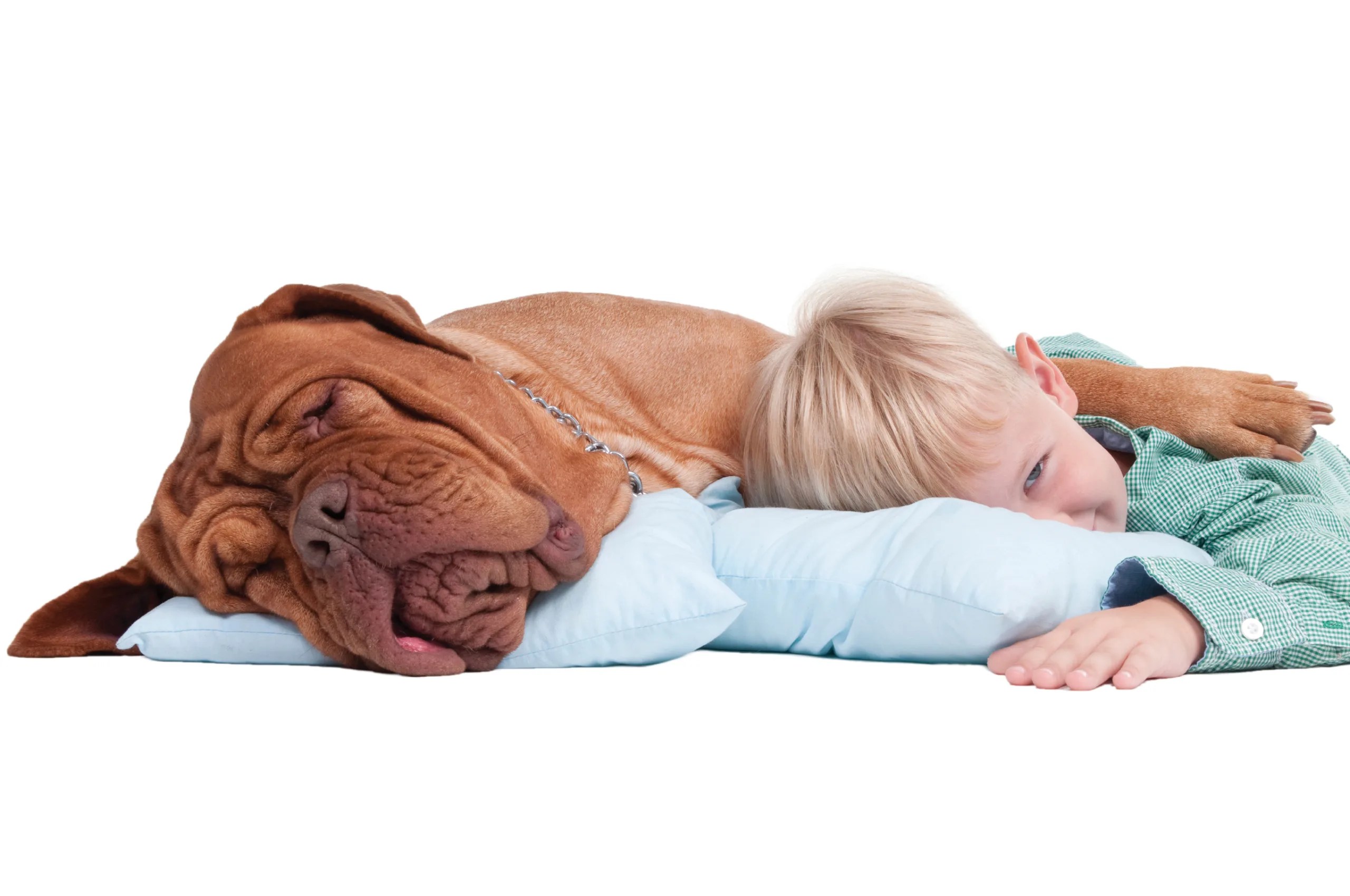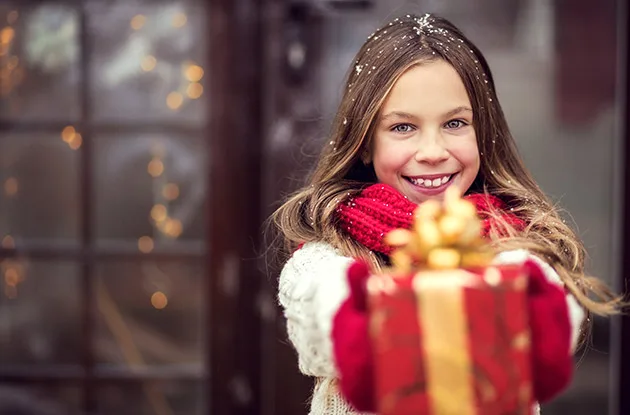You have a dog, but now a baby is on the way. What should you do? Follow this advice to prepare your pet for the arrival of a newborn and train your canine to be safe around all kids.
 Like many couples, my husband and I got our dog before we had kids. Our beautiful and gentle black lab mix that we adopted from the pound was the “king” of the household. He had free range of our home, slept in our bedroom, and kept us company during every activity.
Like many couples, my husband and I got our dog before we had kids. Our beautiful and gentle black lab mix that we adopted from the pound was the “king” of the household. He had free range of our home, slept in our bedroom, and kept us company during every activity.
After the birth of our first child, our large and loving canine friend was dethroned. We originally underestimated the changes that our dog would face in the subsequent months and years of becoming parents. In retrospect, it may have been easier to wait to get a dog until the kids were older. Nonetheless, we loved our pooch and refused to give him up. We discovered, like most things worthwhile in life, with effort, patience, and commitment, we could enjoy our dog and keep our kids safe.
Here are some tips for maintaining security for the dogs and young children in your life and in your home.
Preparing Dog for Baby
Certain playful dog behaviors in a childless home may be tolerated and even enjoyed. Such behaviors may include jumping, hoarding, or chewing up items on the floor, running away with food or clothes, and begging for scraps from the table. “The cute grabbing of clothing may be dangerous when [the dog] grabs the baby blanket,” warn dog experts Brian Kilcommons and Sarah Wilson in their book Child-Proofing Your Dog: A Complete Guide to Preparing Your Dog for the Children in Your Life.
Kilcommons and Wilson suggest that making certain changes in your dog’s routine before the baby arrives may help prevent problems. These changes may include changing furniture or sleeping rights, and limiting games of fetch and “horseplay” to outdoors. If your newborn will sleep in your bedroom for the first few weeks, consider getting a crate for the dog, or get him used sleeping somewhere other than your bedroom. “A dog who is on a routine and is well exercised is less likely to be competitive, anxious, or demanding of your attention,” the authors suggest.
Other preparations before the baby arrives include starting to give the dog less attention (a toughie when the dog has essentially been your “child” up until now). Get the dog used to having to work for and share your attention. “Reserve key phrases or nicknames for the dog that are different from what you may call the baby,” says Sarah Wilson, who also oversees the website mysmartpuppy.com. If the dog is used to hearing you say “what a good boy” or “what a pretty girl” referring to him or her, the dog will be confused when you use the same words for your precious new baby. You may want to change your dog-directed talk to “what a good dog,” or other key words that you won’t be likely to say to your infant.
“Before the baby is born, start by obedience training and properly socializing your dog,” advises Bob Ward, a professional dog trainer with Canine Counselors. Your dog should “gradually be accustomed to potentially arousing events before the baby arrives.” He suggests rocking a doll in your arms while allowing the dog to look at the doll. The dog should be on a leash and remain sitting through this practice. If the dog breaks his sit/stay command, a firm “no” should be used; and conversely, if the dog complies, he should be warmly praised.
Training Your Kids
The antics your dogs display that may be merely amusing and enjoyable to you may prove to be irresistible to older babies and young kids. Let’s face it, children want to grab, pet, tug, hug, and sit on the family dog. Most children, unless taught otherwise (hopefully not through a negative experience) will gravitate towards dogs in general.
According to the American Humane Association, “Dog bites are the number one public health problem for children.” Dogs don’t like to be hurt. Children often unintentionally hurt dogs by pulling their tails or whiskers, hugging them too hard, or even kicking or hitting them. Dogs will generalize—if one child hurts the dog, the dog may growl at all children. It may be in everyone’s best interest to protect your dog from children who tend to be aggressive or who have little experience with animals.
Although far too young to take on the sole care for a dog, a 3-year-old can be responsible for filling a dog’s bowl with food and other simple tasks. Teach your children as early as possible to treat the dog with kindness and respect. Show them to properly approach the dog by not startling the animal. Ward suggests showing children to “slowly approach the dog open-handed, palm-side up, placing his hand under the dog’s muzzle.” He warns that “it is important for the child not to make direct eye contact with the dog as he may see this as challenging his authority, which may produce aggression.” Children should remain calm around dogs, and never run from them.
Praise both the dog and your child for successful interactions. Provide boundaries and guidelines for the dog and kids in your home and yard. Enforce dog safety rules with your children, such as not touching the dog’s food or toys. Explain to young children that dogs are living creatures and have basic needs and feelings not dissimilar to their own.
No Alone Time for Child and Pet
Depending on the size of the dog and the maturity of the child, most experts recommend that children younger than the age of 4 should not be left unsupervised with any dog. Obviously, the larger the dog, the greater the potential risk the animal can pose to a baby or small child. Big dogs are stronger, have sizable mouths, teeth, and paws, and they can reach the cradle and highchair. Even the gentlest dog can be backed into a corner (literally) or feel otherwise threatened by toddlers and preschoolers and be forced to defend himself by barking, growling, scratching, or even biting.
Dogs may be intimidated by small children and may not respond well to their unpredictable behaviors. Babies and young children don’t have the cognitive ability to understand the nature, or respect the potential danger, of dogs, and can’t be trusted to be left alone with any animal. Make it a priority to protect your young child from your dog and to protect your dog from your young child. Secure a separate part of your home or yard to keep the kids and dog apart when they will be out of your view.
Your little one and dog have plenty of time to become best friends. The loving, loyal, and protective relationship between your child and beloved pet is not necessarily natural or immediate, especially if the dog was there first. This bond should be taught and naturally reinforced by the parents. Your veterinarian may also provide you with advice on safety concerns.
Dogs add richness, fascination, and joy to the lives of humans, both children and adults. Research shows that children who grow up with a pet can gain important skills such as empathy and responsibility. With knowledge, patience, and extra vigilance, it is very likely that all of your babies, both human and canine, will live in harmony in your home.
Also see: How to Make No-Sew Blankets for Animal Shelters





















